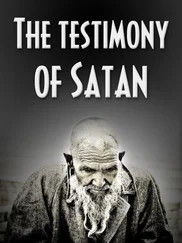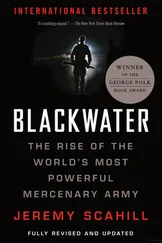But it wasn’t simply a religious cause. The warlords had been a disaster for business in Mogadishu. The “killing [of] prayer leaders and imams in local neighborhoods, and school teachers, really sparked a much-needed anger,” said Abdirahman “Aynte” Ali, the Somali terrorism scholar. But, from a financial perspective, he said, the warlords “had been holding Mogadishu hostage for sixteen years. They failed to open the airport, the seaport; they all had small airstrips beside their houses—literally, their houses. And so they were holding people hostage.” In late 2005, businessmen had begun funneling money to the ICU to buy heavy weapons to take on the CIA warlords. Somalis from all walks of life began signing up to fight alongside the ICU. “People would leave their jobs at 5 pm at the Bakaara Market, take their weapon and join the fight against the warlords,” recalled Aynte. “And the next morning they would report back to their shop, or whatever. I mean, it was stunning.”
THE ISLAMIC COURTS UNION was not a homogenous bunch. Many of the Courts’ leaders and rank and file had no connection to al Qaeda, knew little of bin Laden and had an agenda that was squarely focused internally. Their meteoric rise in popularity had everything to do with hatred for the warlords, combined with a fierce desire for stability and some degree of law and order. “We deployed our fighters to Mogadishu with the intent of ceasing the civil war and bringing an end to the warlords’ ruthlessness,” said Sheikh Ahmed “Madobe” Mohammed Islam, whose Ras Kamboni militia, based in Jubba in southern Somalia, joined the ICU in 2006. He told me, “Those of us within the ICU were people with different views—liberals, moderates and extremists.” Other than expelling the warlords and stabilizing the country through Sharia law, he said, there was “no commonly shared political agenda.”
There were certainly elements of the ICU that had a Taliban-like vision for Somalia. But the regionally based courts were largely used to govern their specific clans or subclans, rather than as a national justice system. Although Somalia is an almost exclusively Muslim nation, it also has a strong secular tradition that would have come into direct conflict with a Taliban-style agenda imposed nationally. “The courts’ promise of order and security appeals to Somalis across the religious spectrum. Their heterogeneous membership and the diversity of their supporters mean that attempts to label the Shari’a system ‘extremist’, ‘moderate’ or any other single orientation are futile. In reality, the courts are an unwieldy coalition of convenience, united by a convergence of interests,” the International Crisis Group noted in its 2005 report “Somalia’s Islamists.” The ICG asserted that only two of the courts had been “consistently associated with militancy” and that they were counterbalanced by other courts. It concluded, “[M]ost courts appear to exist for chiefly pragmatic purposes. Rather than imposing an Islamist agenda on a new Somali government, most are likely to be absorbed willingly into any future judicial system.”
That did not mean that extremists did not view the Courts as a vehicle to implement their radical agenda. “We share no objectives, goals or methods with groups that sponsor or support terrorism,” declared Sheikh Sharif, the head of the ICU, in an appeal to the international community. “We have no foreign elements in our courts, and we are simply here because of the need of the community we serve.” Sharif’s declaration may have been technically true, but that is only because the Harakat al Shabab al Mujahideen was not officially one of the Courts.
More commonly known by its abbreviated name, al Shabab, or The Youth, the group of young Islamist militants had joined forces with the ICU during the war against the warlords. There are varying accounts of when al Shabab officially formed, ranging from the late 1990s to 2006. Based on his interviews with insiders, Aynte concluded it was sometime in 2003. Al Shabab was initially organized by Aden Hashi Farah Ayro, who the United States alleged trained at al Qaeda camps in Afghanistan and was behind the killing of foreign aid workers in Somalia. Another influential leader was Ahmed Abdi Godane, a well-known jihadist from Somalia’s relatively peaceful north. The men began training a cadre of young Somalis for a holy war. “They were extremely secretive, and many people who were part of that training were not widely accepted in the society. They were not Islamic scholars, they were not clan elders,” said Aynte. “They were looking for legitimacy, so they joined the Islamic Courts Union, and they were not going to lose anything. If the ICU morphed into a central government for Somalia, it was a great deal. If it disbanded, they knew they would capture the essence of it. They had foresight.” Eventually, al Shabab would win a powerful ally in Hassan Dahir Aweys, a former Somali army colonel turned military commander of Al Itihaad al Islamiya (AIAI), following the overthrow of Barre’s regime.
IN AL SHABAB, al Qaeda saw opportunity: the chance to actually penetrate a Somali political landscape that it had long struggled—and largely failed—to exploit. Among al Shabab’s closest allies in those early days was Indha Adde, at the time a key member of Aweys’s faction of the ICU. “I was protecting all of these people,” he recalled of the foreigners who had begun appearing amid al Shabab. “I thought of them as good people.” Among those he harbored was Abu Talha al Sudani, an alleged explosives expert and a key figure in the world of financing al Qaeda’s East Africa operations. Indha Adde also sheltered the Comoro Islands–born Fazul Abdullah Mohammed, the alleged mastermind of the 1998 embassy bombings. “At the time, Fazul appeared to me as a stable man,” Indha Adde recalled. “Actually he told us that he had nothing to do with the bombings.” When the war against the CIA-backed warlords began, Indha Adde realized that Fazul “had great military experience. He and other [foreign fighters] were trained by Osama personally.” To Indha Adde, the CIA and the US government were the aggressors, and the foreign fighters increasingly popping up in Somalia were part of a growing struggle to reclaim the country from the warlords. Backed by al Qaeda, al Shabab forces began using Qanyare and the other warlords’ own tactics against them, assassinating figures associated with the CIA’s warlord alliance.
Fazul may have convinced Indha Adde that he had nothing to do with terrorism. But in the chambers of the US counterterrorism community, Fazul had become Washington’s number-one HVT in East Africa. Fazul was not just a terrorist; he was a believer. And, by all accounts, he was brilliant. Born in 1972 or 1974, depending on which of his many passports or ID cards you look at, Fazul grew up in a stable, economically viable family in the extremely unstable cluster of islands that make up the Comoros. The political backdrop of his childhood was filled with coups or attempted coups—at least nineteen in all—after the Comoros declared independence from France in 1975. As a kid, Fazul liked to pretend he was James Bond as he played spy games with his friends. He enjoyed mimicking Michael Jackson’s dance steps and was, according to his teachers, an extremely bright child. By the age of nine, he had memorized much of the Koran and could be heard reciting its verses on national radio. As he grew older, Fazul began studying under preachers who subscribed to a Saudi Wahabist worldview.
By the time he arrived in Karachi, Pakistan, in 1990, Fazul was already fully radicalized. Originally enrolled as a medical student, he soon transferred to Islamic studies and was recruited to train with the mujahedeen, which had just expelled the Soviets from Afghanistan. It was in Peshawar, Pakistan, that he first heard Osama bin Laden preach. Soon thereafter he arrived in Afghanistan to receive training in guerrilla warfare, surveillance evasion, the use of various small and heavy weapons and bomb-making. In 1991, he wrote to his brother Omar that he “got confirmed” in al Qaeda. His first mission, in 1993, would be to travel to Somalia to help train the small groups of Islamic militants who had joined in the insurrection against the US and UN forces. He worked under Abu Ubaidah al Banshiri, whom bin Laden had placed in charge of al Qaeda’s Somalia operations. For Fazul, it was the beginning of a long terrorist career in East Africa. It was there that he first hooked up with Aweys and members of Al Itihaad, the people who would later bring him into the fold of the Islamic Courts Union.
Читать дальше












